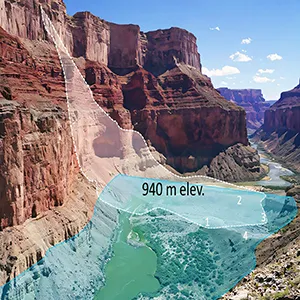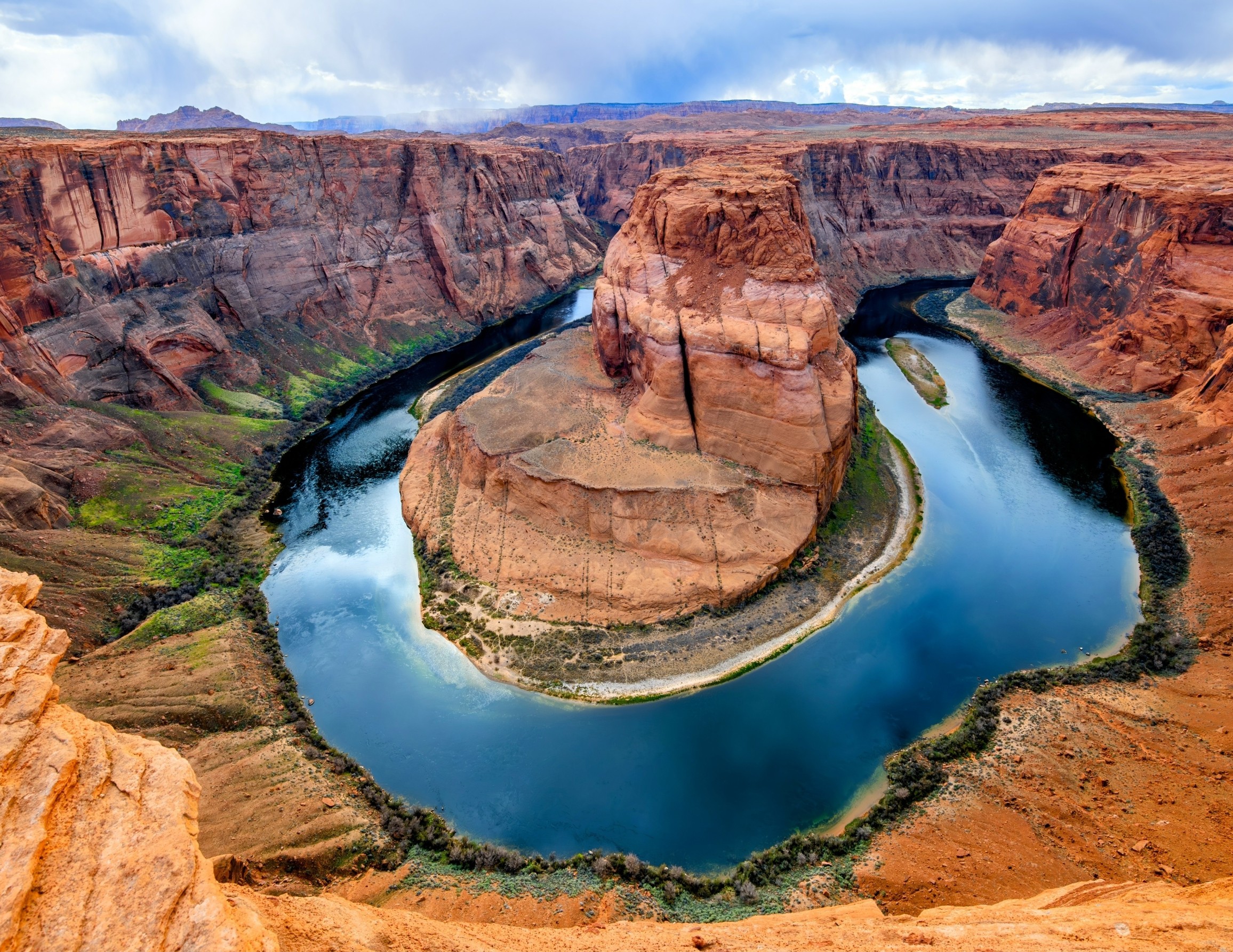There’s a curious mystery involving a meteor, a massive landslide, and an ancient lake – all buried in the layers of rock and sediment across the Grand Canyon. It’s a story pieced together over decades through science, family ties, and unexpected discoveries.
In a new study from researchers at the University of New Mexico, scientists connect the Meteor Crater impact in Arizona to a rockslide in the Grand Canyon that may have dammed the Colorado River around 56,000 years ago.
This dam likely created a temporary lake, and clues from caves high above the current river level seem to support that idea.
Decades of cave research
The idea took root in the 1960s, when Thor Karlstrom explored Stanton’s Cave in the Grand Canyon with a cross-disciplinary team of geologists and archaeologists.
The experts found evidence of now-extinct species like the California condor and Harrington’s mountain goat, along with split twig figurines made 3,000 to 4,000 years ago by ancestors of today’s tribal communities in the region.
They also uncovered driftwood buried in sediment. Initial testing suggested the wood was older than 35,000 years – pushing the limit of radiocarbon dating at the time.
By 1984, the date was refined to 43,500 years. But recent tests using more advanced methods in labs from New Zealand and Australia now put the driftwood at 56,000 years old.
Mysterious age of the cave deposits
Today, Thor’s son, Karl Karlstrom, a geologist at the University of New Mexico, is carrying that early work forward.
“It would have required a ten-times bigger flood level than any flood that has happened in the past several thousand years,” said Karlstrom.

“Or maybe they are very old deposits left as the river carved down, or maybe they floated in from a paleolake caused by a downstream lava dam or landslide dam? We needed to know the age of the cave deposits.”
Canyon wood matches meteor age
Chris Bastien, another co-author of the study, had been working on wood samples from Stanton’s Cave stored at the University of Arizona’s Tree Ring Lab.
At the same time, David Kring, a scientist working on the chronology of Meteor Crater, had refined its estimated age to a window between 53,000 and 63,000 years using multiple methods.
Then came the break. Jonathan Palmer, a visiting collaborator from Australia, stopped at both Meteor Crater and the Tree Ring Lab during a U.S. road trip.
Palmer noticed something remarkable – the ages of the crater and the driftwood lined up almost perfectly. That connection kicked off the collaboration that led to the new paper.
“From numerous research trips, Karl and I knew of other high-accessible caves that had both driftwood and sediment that could be dated,” said Laurie Crossey.
The team sent a second driftwood sample to labs in Australia and New Zealand, and sediment samples to Tammy Rittenour at Utah State University. Using two separate dating methods, the results came back with nearly identical ages: around 55,600 years.
Meteor’s impact on the Grand Canyon
Back in the 1980s, Richard Hereford of the U.S. Geological Survey proposed that a rockslide near Nankoweap Canyon, about 22 miles downstream of Stanton’s Cave, may have blocked the Colorado River.
That dam could have created a lake that floated wood into the cave. Now, with fresh dating evidence, that idea has resurfaced.
Further support came from Grand Canyon caver Jason Ballensky, who had seen beaver tracks in Vasey’s Paradise caves – deep inside areas far above and away from today’s riverbanks. The only plausible explanation: a massive ancient lake.
The researchers mapped how deep and wide that paleolake might have been. Some caves with driftwood and sediment were found at 940 meters elevation – high enough that the water would have backed up above Lees Ferry, where river trips typically begin. The lake theory started to look more than plausible.
The team also revisited the landslide site. There, reddish, chaotic rocks – consistent with landslide debris – were found beneath rounded river cobbles.
That layering suggests a dam formed, held back water, and was eventually overtopped and eroded away. Based on what’s known from modern dam erosion, the whole cycle could have lasted less than 1,000 years.
The evidence is adding up
Was the Meteor Crater blast enough to trigger the rockslide that dammed the river? Kring has studied the physics of meteorite impacts and estimates that this one would have caused a magnitude 5.4 earthquake – possibly even a 6.0 depending on the model.
Even 100 miles away in the Grand Canyon, the seismic energy would have hit as a magnitude 3.5 shock. That’s enough to dislodge unstable cliffs and trigger rockfalls.
“The team put together these arguments without claiming we have final proof; there are other possibilities, such as a random rockfall or local earthquake within a thousand years of the Meteor Crater impact that could have happened independently,” said Karlstrom.
“Nevertheless, the meteorite impact, the massive landslide, the lake deposits, and the driftwood high above river level are all rare and unusual occurrences.”
“The mean of dates from them converge into a narrow window of time at 55,600 ± 1,300 years ago which gives credence to the hypothesis that they were causally related.”
Meteor strike in the Grand Canyon
There’s still room for debate. The idea that a meteor could have triggered a landslide that created a temporary lake sounds dramatic – but the evidence is adding up.
The picture that’s emerging – a meteor striking Arizona, shaking the Grand Canyon, causing a landslide that blocks the river and forms a lake – isn’t just a wild theory anymore. It’s a serious hypothesis backed by decades of data and careful fieldwork.
And while the story isn’t finished, it’s a strong reminder of how even the most unexpected clues – like a piece of driftwood tucked in a cave – can lead to discoveries about Earth’s past that no one saw coming.
The full study was published in the journal Geology.
—–
Like what you read? Subscribe to our newsletter for engaging articles, exclusive content, and the latest updates.
Check us out on EarthSnap, a free app brought to you by Eric Ralls and Earth.com.
—–
